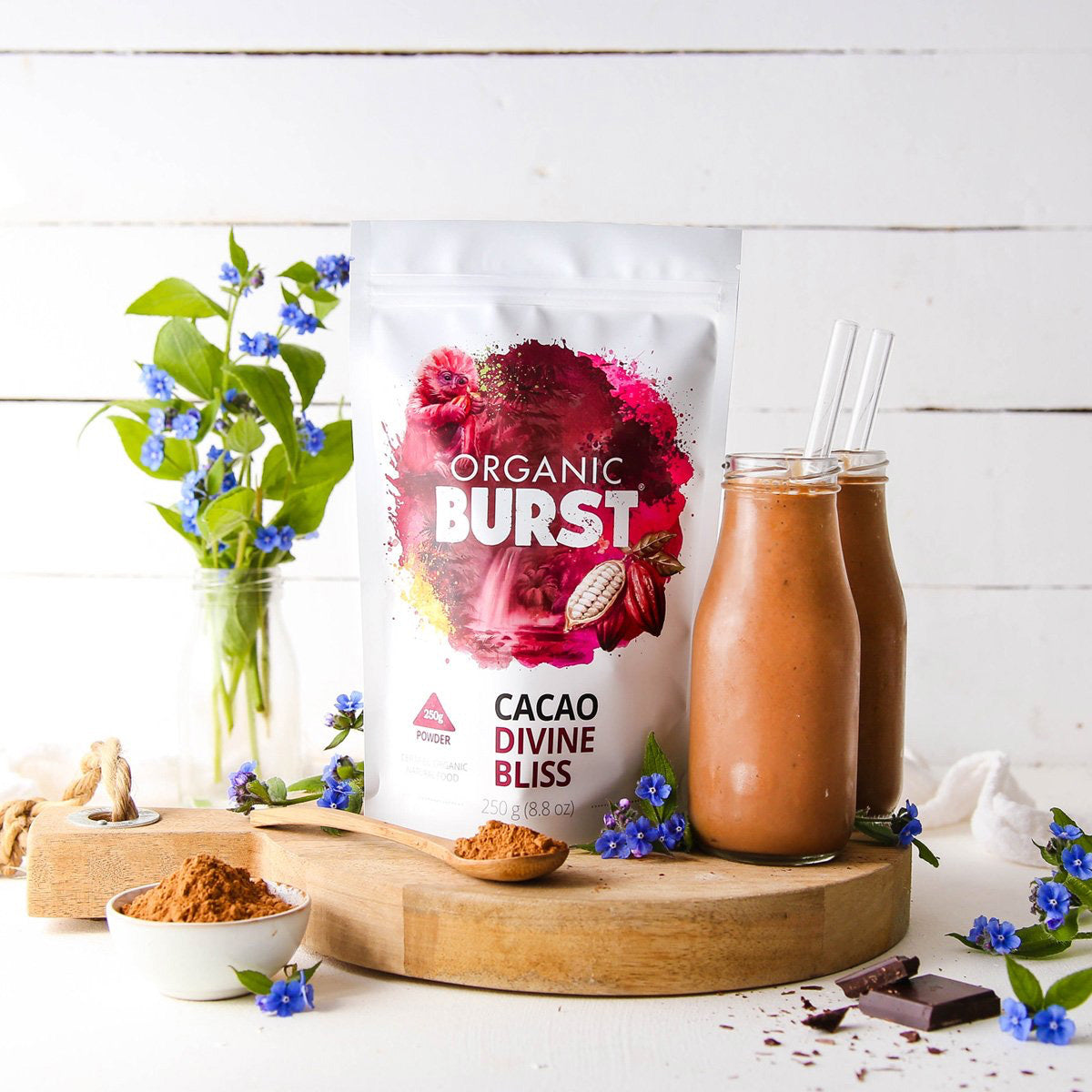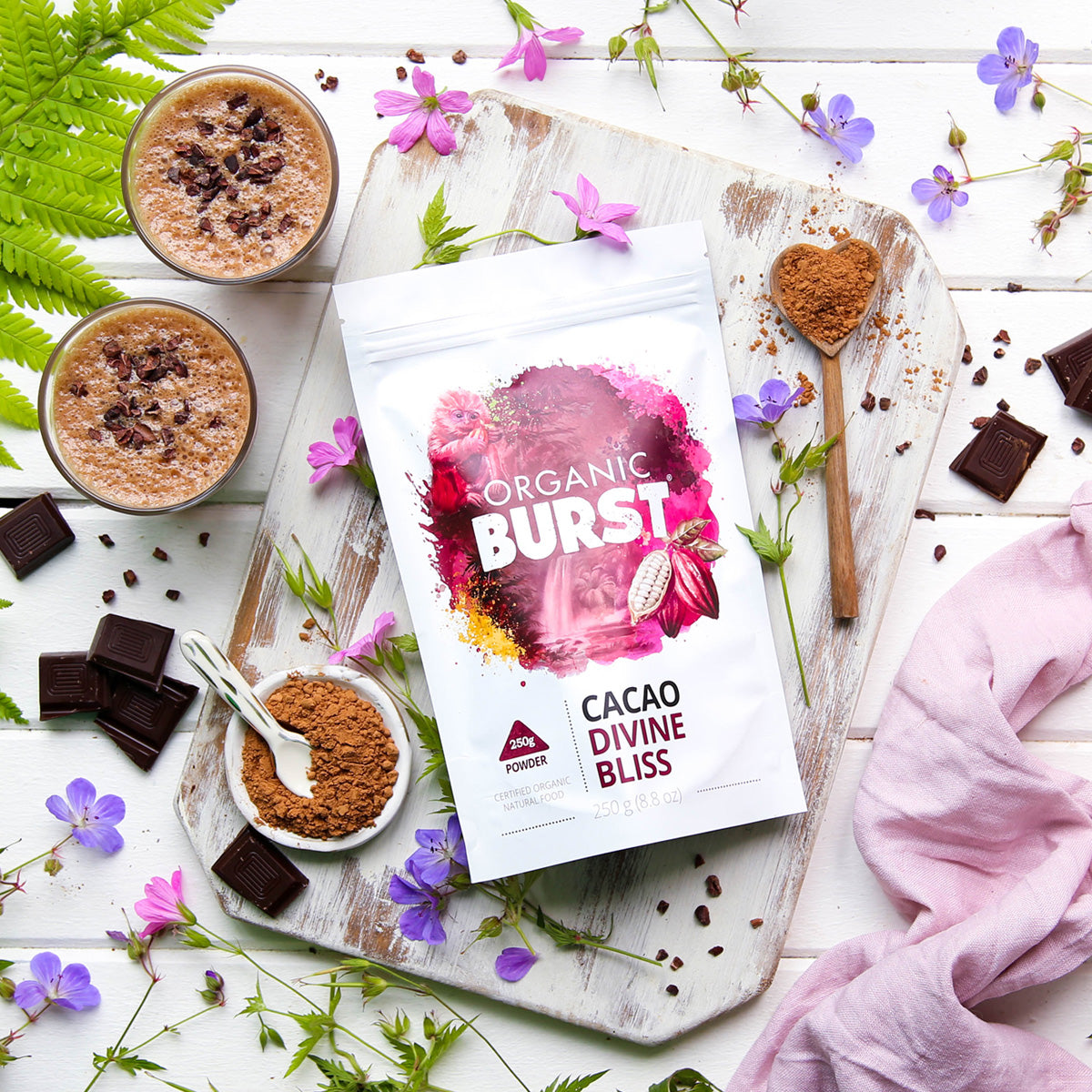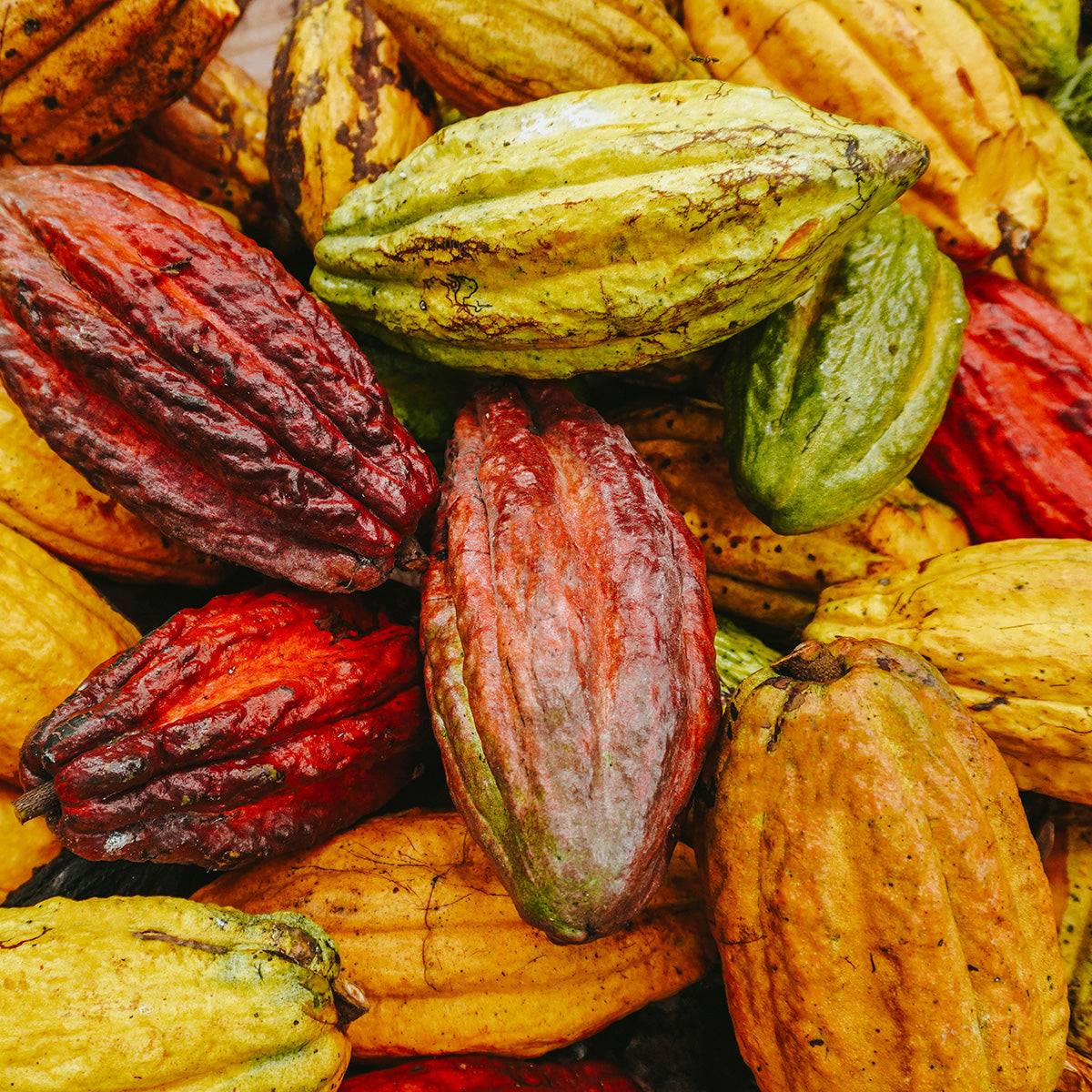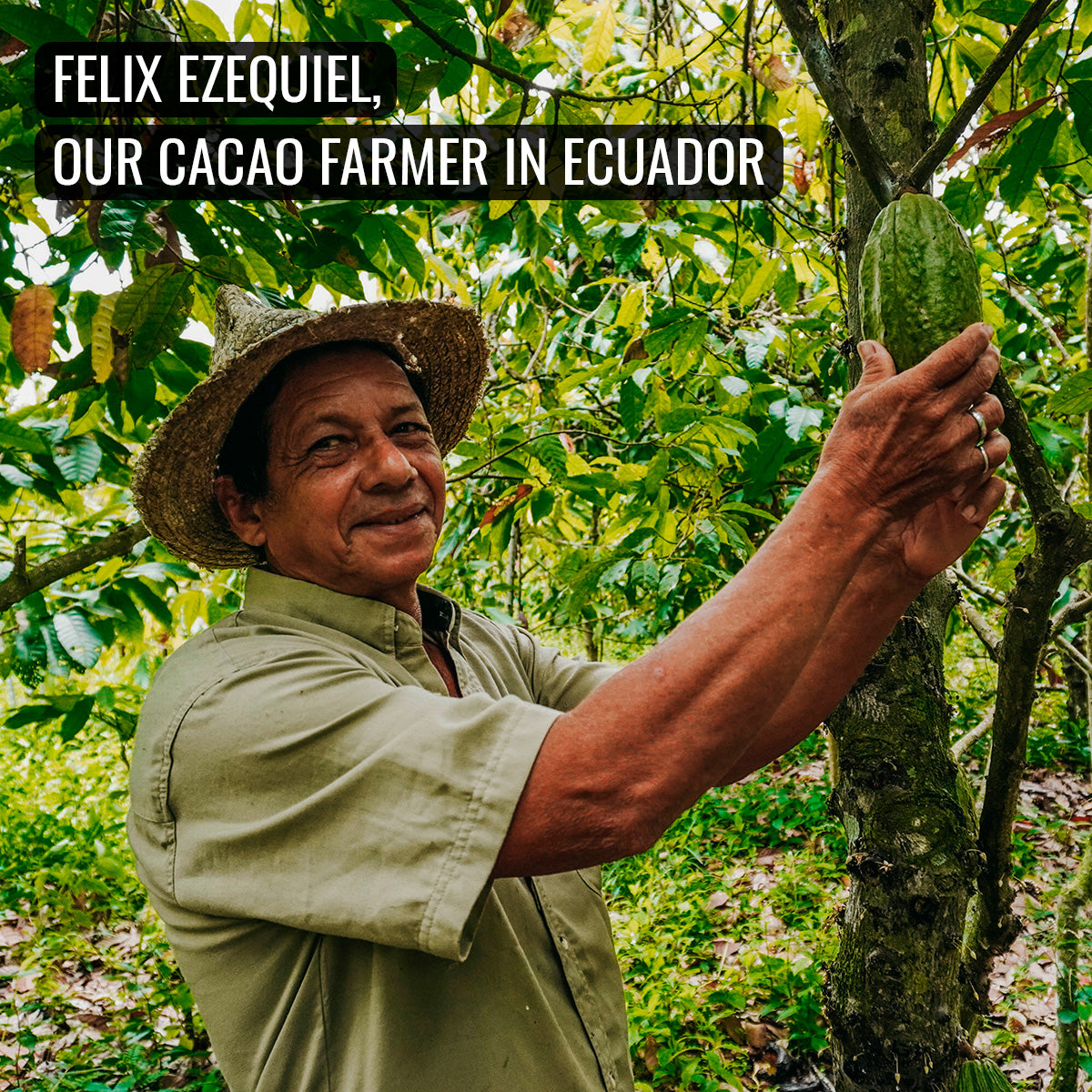Cacao
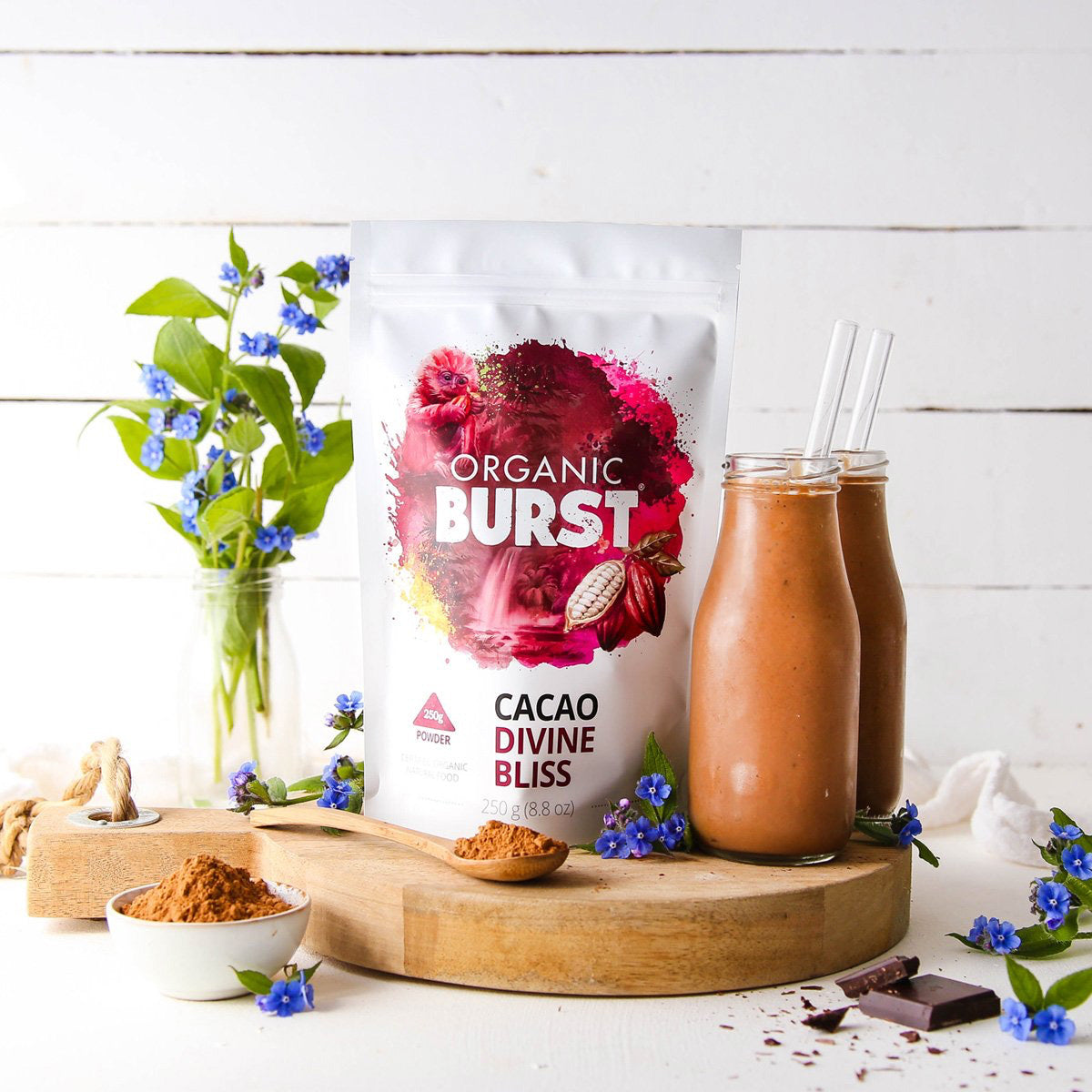
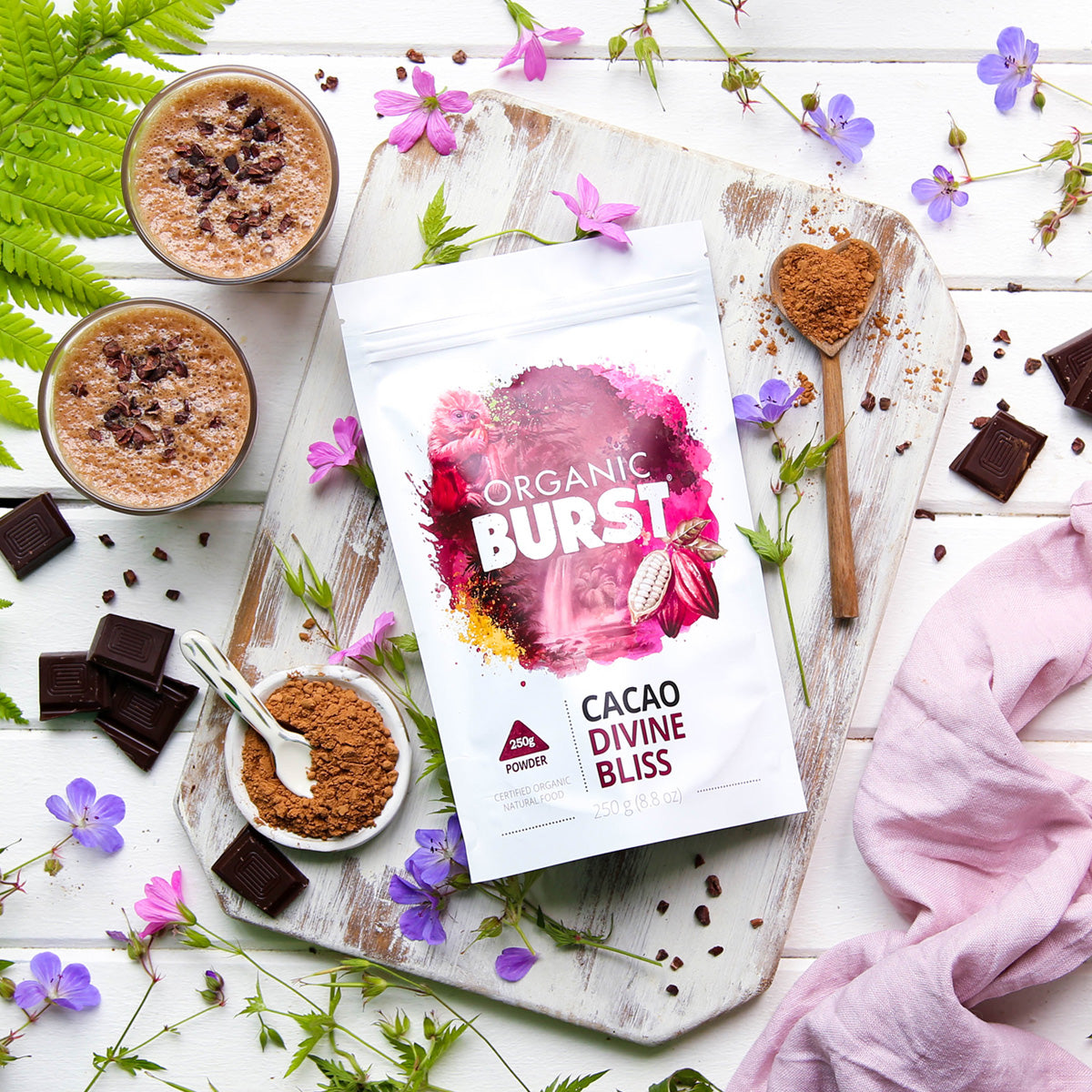
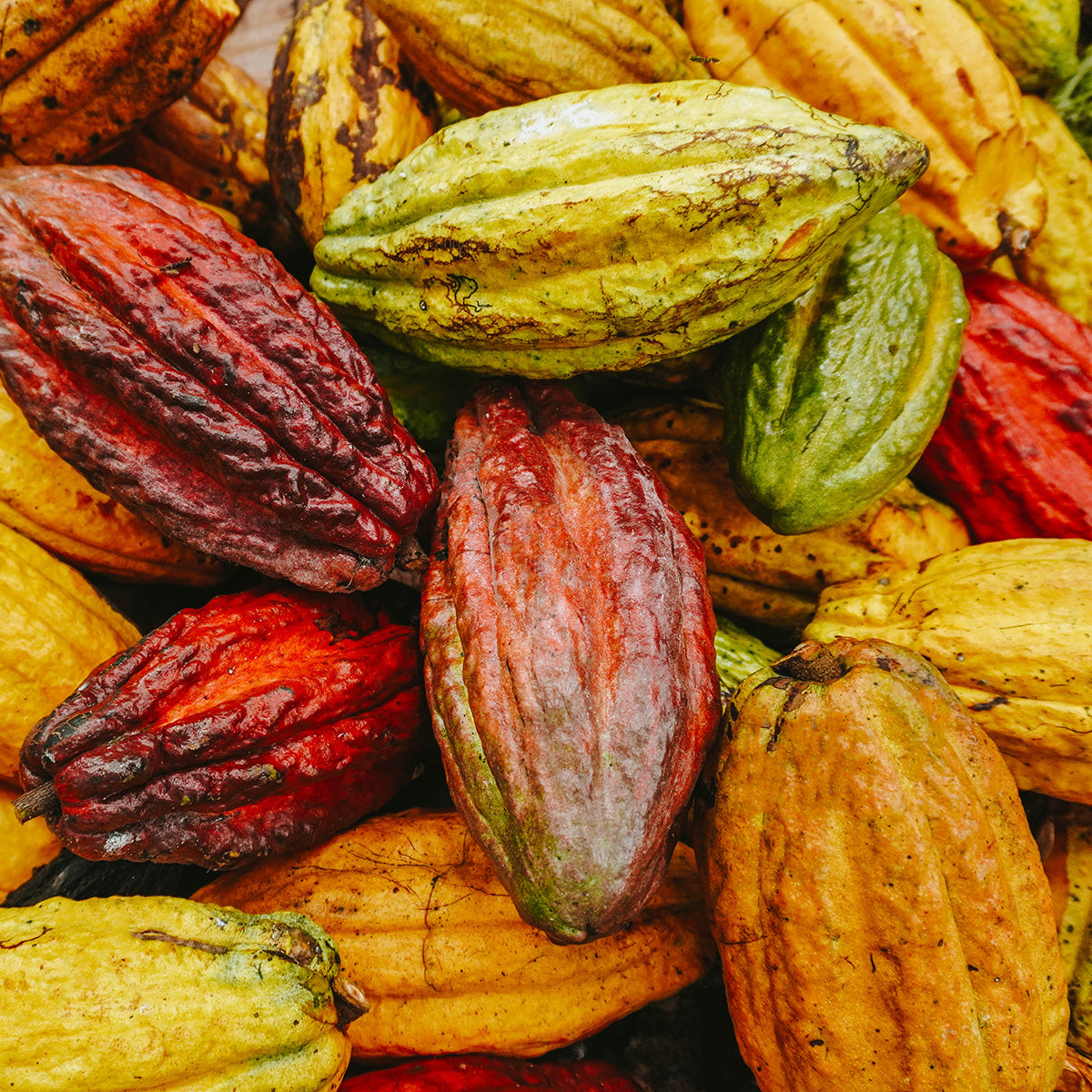
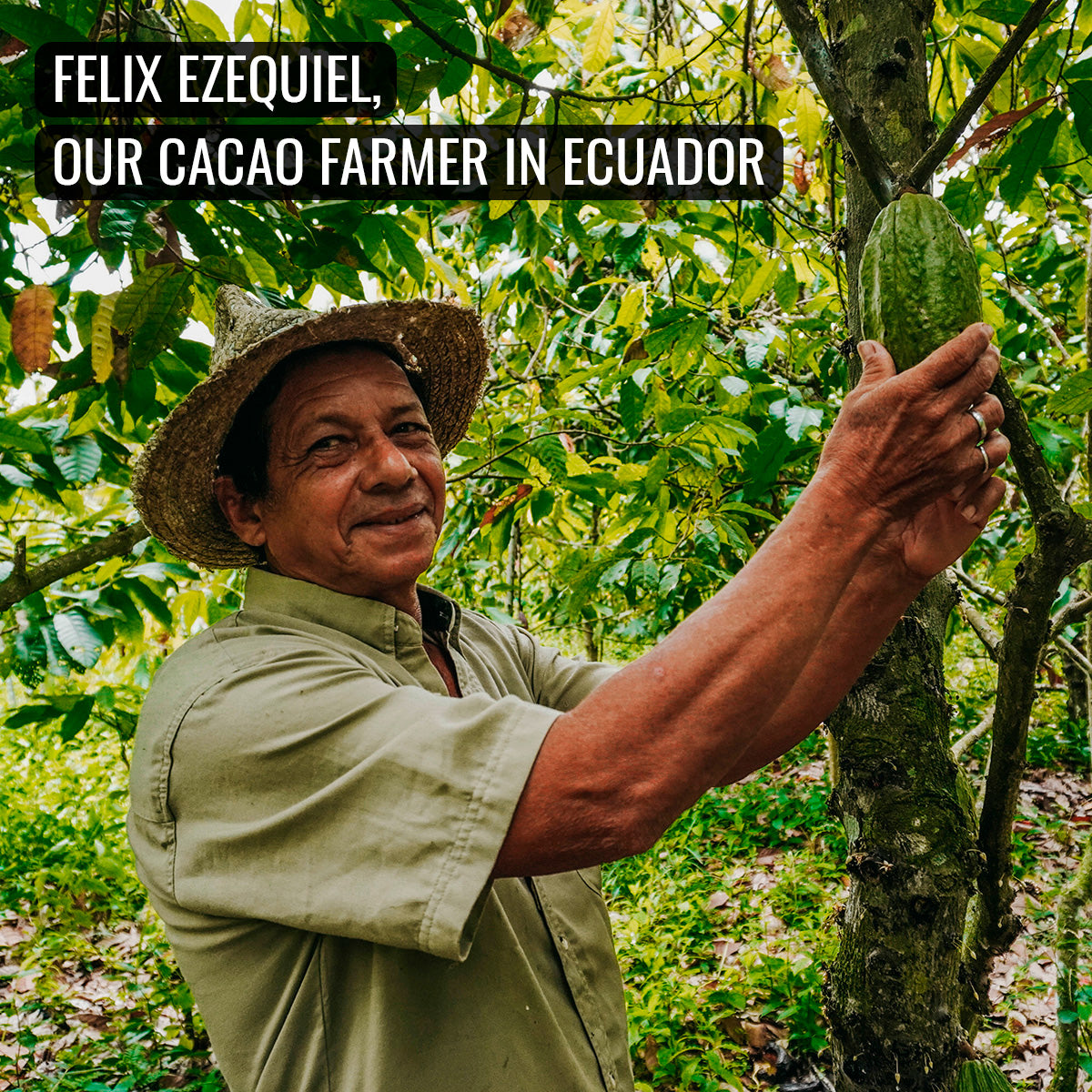
Melt into a state of bliss with our rare and highly sought-after Ecuadorian Cacao. Forget your worries, lift your mood, reduce stress, feel calm and truly content!


Here's Why You'll Love It

Mind Blowing, Luxurious Flavor
The rich, smooth, deep flavor of our rare “Arriba Nacional” Cacao from Los Rios is pure bliss. It is a national treasure of Ecuador and valued so highly that fearless chocolatiers of the 18th and 19th centuries, trekked dangerous terrains to find these sought-after cacao trees.
This unique variety was thought to have been wiped out but was rediscovered in recent years. What a history!
Even the UN recognizes its fine flavor and each spoonful feels incredibly special, true luxury to be savoured, whether it’s an ingredient for your energy bites, oatmeal, chia pudding, chocolate avocado mousse or a plain old cup of hot choc!

Boost Your Mood
Our Cacao contains natural compounds such as theobromine that can enhance your mood, concentration and even arousal (Source: Nutrients, 2013). They are partially responsible for the amazing smell of chocolate that we all love!
In addition, Cacao also contains the neurotransmitter anandamide (known as the “Bliss Molecule”), tryptophan and serotonin, that our brains release when we are joyful.

Melt Away Stress
The powerful flavanols contained in our Cacao have been found to help you cope with stress.
In a study of healthy men who consumed flavanol-rich dark chocolate, researchers found a significant reduction in the negative effects of stress on the body (Source: Brain, Behavior and Immunity, 2016).
Better control of stress hormone levels can mean you avoid the heart-pounding, fast breathing and digestive discomfort that stressful situations can trigger.

Feel Calm & Content
Help your mind and body relax with our polyphenol-rich Cacao. In a study published in the Journal of Psychopharmacology (2013), participants who consumed a polyphenol-rich chocolate drink daily reported significantly increased calmness and contentedness relative to a placebo after 1 month.
Another study found a 57% lower incidence of depressive symptoms in polyphenol-rich dark chocolate-eaters vs. those who reported no chocolate consumption (Journal of Depression and Anxiety, 2019).

Keep Your Heart Healthy
Many studies show a link between eating chocolate (particularly dark) with a reduced risk of heart problems. A review found that the highest levels of consumption were associated with a 37% reduced risk of heart disease (British Medical Journal, 2011).
In 2017 another research analysis published in the journal Nutrients, found a potential protective effect of consuming chocolate up to 7x per week on heart disease risk. Our Cacao contains the powerful plant compounds but no refined sugar as would be found in the chocolate used in these studies.

Maintain Healthy Blood Pressure
Evidence shows eating high-flavanol dark chocolate daily can significantly reduce systolic blood pressure, helping to keep your blood vessels and organs healthy (Asia Pacific Journal of Clinical Nutrition, 2008).
Another study from the American Journal of Clinical Nutrition (2005) found that 100g dark chocolate daily decreased blood pressure after 15 days, where white chocolate showed no improvements.

Have A Happy Pregnancy
The major methylxanthine found in chocolate (and in our Cacao) – theobromine was found to lower the risk of preeclampsia in a fascinating study from 2OO8 published in the journal Epidemiology.
Women who had more than 5 servings of chocolate per week were found to have a decreased risk of this pregnancy complication that involves raised blood pressure and damage to organs.
Be sure to check in with your health practitioner before starting any new food during pregnancy.

Bump Up Your Antioxidants
Our pure, Cacao powder is packed choc-full of flavonoid antioxidants including epicatechin, catechin and other procyanidins. These work to neutralize free radicals (from pollutants, the sun and our metabolic processes) that can cause damage to your cells.
Keeping antioxidant levels high benefits your immune system, skin, and brain power (Antioxidant and Redox Signalling, 2011).

Beat The Bloat & Have A Happy Tummy
The beneficial bacteria in our gut have been shown to significantly increase in participants who had a daily high-flavanol cacao drink for 4 weeks in a 2011 study from the American Journal of Clinical Nutrition.
Flavanols in the cacao were concluded to be effective prebiotics to help the growth of Lactobacillus and Bifidobacterium, which support the immune system, digestion and absorption of nutrients – among other benefits!

Smoother, Youthful Skin
High levels of cacao flavanols were found to have positive effects on facial wrinkles and elasticity in ‘moderately photo-aged women’ in a study published in the Journal of Nutrition (2015). The researchers suggested that the cacao flavanols could be used to prevent the progression of aging from UV rays.
Another study found significant protection of skin from harmful UV effects in those regularly consuming flavanol-rich chocolate, but not in those eating regular chocolate (Letters of Applied Microbiology, 2009).

Switch On Your Memory Superpowers
Cacao could be your secret weapon for times when you need to perform at your best!
Within only 2hrs of eating a small bar of dark chocolate, participants in a 2020 study achieved better verbal memory performance when tested vs. those given low flavanol white chocolate (Nutrients).


What makes our Cacao so Unique

A Taste Highly Desired By The World’s Top Chocolatiers
Our variety of Cacao from Ecuador, called Arriba Nacional, is revered and highly desired by the world’s top chocolatiers for its luxurious, superior flavor and aroma.
The legend of a uniquely aromatic cacao reached European chocolate makers in the 18th century, which led to many expeditions across Ecuador in search of this natural treasure.
Our Cacao variety traces its lineage back 5300 years, directly to some of the very first cacao trees to exist. At some point it was thought to have gone extinct until only in recent years when it was again rediscovered.
Today it has been recognised by the United Nations and designated a special status of “Fine” flavor.
Genuine & Pure Arriba Nacional Cacao, Not A Hybrid
The genuine Arriba Nacional cacao is very rare and quickly disappearing. This is because most cacao products on the market today are hybrids, such as CCN51 - a common hybrid variety from Ecuador, often sold as Arriba Nacional or mixed with Arriba.
Hybrid cacao varieties, such as CCN51 have a higher yield, at least double that of Arriba, but they cannot compare to the luxurious, fine chocolate flavour of Arriba and its lack of bitterness.
The practice of mixing hybrid varieties is destroying the original Arriba Nacional cacao. Organic Burst Cacao is always the pure and genuine Arriba Nacional variety grown by Ecuadorian family farmers.


Free From Cadmium & Lead Contamination
Sadly cacao overall is very susceptible to environmental pollutants and is notorious for high cadmium and lead levels. It has taken us 6 years to find a source that is not only a socially ethical project, but also lab tested to show contamination levels of cadmium and lead are not present!
Not Dried on Road Surfaces
Sadly, it’s such a common practice amongst many cacao farmers to dry cacao seeds directly on hot road surfaces for quick results!
This exposes the cacao beans to toxic car fumes and chemical road pollutants.
None of our Cacao is dried on or near roads.
Supporting Cacao Family Growers
As with all of our products, ethical sourcing is at the core. Our Cacao is grown on land fully owned by local Ecuadorian families and not large corporations.
Our growers are supported with the knowledge, equipment and training to be able to harvest sustainably and organically the highest quality Cacao.
Working with Cacao has provided them a source of income to improve their living conditions, give their children good education and onward develop their skills to better their lives.


Using Ancient Knowledge For Healthier Cacao Trees & Increased Biodiversity
Our growers support the natural biodiversity of plants around their cacao trees - an ancient practice passed down through the generations important for stronger nutritious crops and rooted in a deep respect for nature. Supportive plants such as yuca, plantain, papaya and banana all grow around our cacao trees.
In modern times, science is only now starting to understand how different plant species, when grown together, can protect and strengthen each other through complex relationships.
Grown Organically Without Chemicals
Our family farmers use only natural methods to control insects, fungus and weeds. They never use substances such as DEET (which are still widely used on some farms) and other toxic pesticides.
No use of such toxins ensures the environment, soil and water remain unpolluted, protecting the natural flora and fauna.
Also our cacao trees grow far from any commercial non-organic farms, meaning there is no cross contamination of harmful pesticides, herbicides and insecticides.
Here Are Some Frequently Asked Questions About Cacao
Is Your Cacao Raw?
In the world of cacao and chocolate, there is no standard definition for what is “raw” and often means completely different things from product to product. So it all depends on the definition of “raw”.
For example, some use the word raw to signify that their cacao beans are not roasted. Some to imply their powder is not processed with alkaline solutions to alter the taste. Others to say that their ground cacao beans are not pressed to remove the butter. There are many variations in the creation process of cacao powder that could be used as a reason to call the end product “raw”.
If your definition of raw is that at no point during preparation the cacao is exposed to a temperature over 42 degrees Celcius (108 Fahrenheit), then there likely is no such thing as truly “raw” cacao powder in this sense.
Cacao beans need to undergo a fermentation process once removed from the fruit. Our cacao beans are fermented in special natural wooden crates designed for equal and effective fermentation through the entire batch of beans. This fermentation will quickly reach temperatures of over 50 degrees Celcius (122 Fahrenheit) and is near impossible to control.
These fermented beans are then cleaned and heat treated to ensure no bacterial contamination. After this, they are gently ground and pressed to increase the concentration of active compounds by removing the oils. During the pressing, heat to some extent will also be present simply by the nature of the process, albeit for a short amount of time.
Our Cacao is not treated with any chemicals, such as alkaline solutions, to alter the taste or composition of the original cacao bean as these processes lead to the loss of beneficial compounds. Often alkaline treated cacao, also known as Dutch Processed, is subsequently referred to as “cocoa”.
Also, our Cacao beans are not roasted as many others are.
Therefore, we have decided to completely avoid using the word “raw” to prevent confusing and misleading anyone.
Is Your Cacao Criollo?
First we must understand what “Criollo” really is. Commonly it's said that there are 3 varieties of cacao: Criollo, Forastero and Trinitario. However, as leading cacao experts agree, the adoption of these inaccurate terms has likely been the single biggest mistake in the history of cacao.
In fact these are not varieties at all, but merely groupings. For example, in 2008 a large DNA analysis was undertaken across South America that identified 10 unique varieties. In addition there are also many hybrids of the various varieties.
To further complicate things, it turns out that the groupings Criolla, Forastero and Trinitatrio themselves are not very well defined either.
It all started with “Criollo” and “Forastero”. “Criollo” means “native” or “local” and “Forastero” mean “foreign”. But local and foreign to who and where? Well, as it turns out, Spanish travellers first encountered cacao in Central America and therefore the cacao growing there was local, and all other cacao was foreign. So, cacao growing in Central America was Criollo (local) and cacao growing in Peru for example was Forastero (foreign). But to the people in Peru, or Ecuador for example, other cacao would have been Forastero (foreign) and their local varieties would have been Criollo (local).
It was the perfect recipe for mass confusion that would continue for hundreds of years to the present day.
So, Criollo does not mean “original” and it does not imply high quality. The same way Forastero does not mean “non-original” and does not imply low quality. There are many high and low quality cacao beans of various varieties in both groups, sometimes the same variety even being double counted across groups.
If we are looking for original cacao varieties, then we know that cacao originated from a small area of the Amazon, covering areas of Ecuador, Colombia, Peru, Venezuela and Brazil. They then spread from there around the world by both natural and non-natural means.
Therefore we try to avoid using confusing terminology such as “Criollo”.
Our Cacao variety is pure Arriba Nacional from Ecuador, considered by cacao experts and top chocolatiers to be the finest in the world for its superior flavor and aroma. It has even been recognised by the United Nations and given an official status of “Fine” flavour.
Is Your Cacao Contaminated With Cadmium & Lead?
Every batch of our Cacao, before it is released for sale, is independently lab tested to verify no contamination of cadmium and lead is present.
Generally in cacao, these are the two heavy metals very often found at too high levels. They accumulate via the soil, through poor processing practices with low quality equipment and due to environmental pollution.
It took us 6 years of searching across the globe to find the perfect Cacao. This of course involved many factors, one of which was to ensure no heavy metal contamination. After many lab tests of seemingly good sources came back with bad heavy metal results, we finally found “the one” that consistently passed the scrutiny of independent scientists.
Our Cacao grows in clean soil, that’s never seen the use of chemicals — the soil itself being tested to ensure low cadmium levels in the first place. The cacao trees are all in a remote location, far from industry that can cause environmental pollution.
Also our growers never dry their beans on concrete road surfaces - as is sadly a too common practice worldwide and can cause high levels of lead from car and truck fumes.
Our lab testing not only looks for cadmium and lead, but other dangerous heavy metals such as mercury, arsenic, harmful bacteria, yeast, mould and other toxins.
Do you have any more questions on Cacao?

Reviews
ONLY VERIFIED CUSTOMERS


